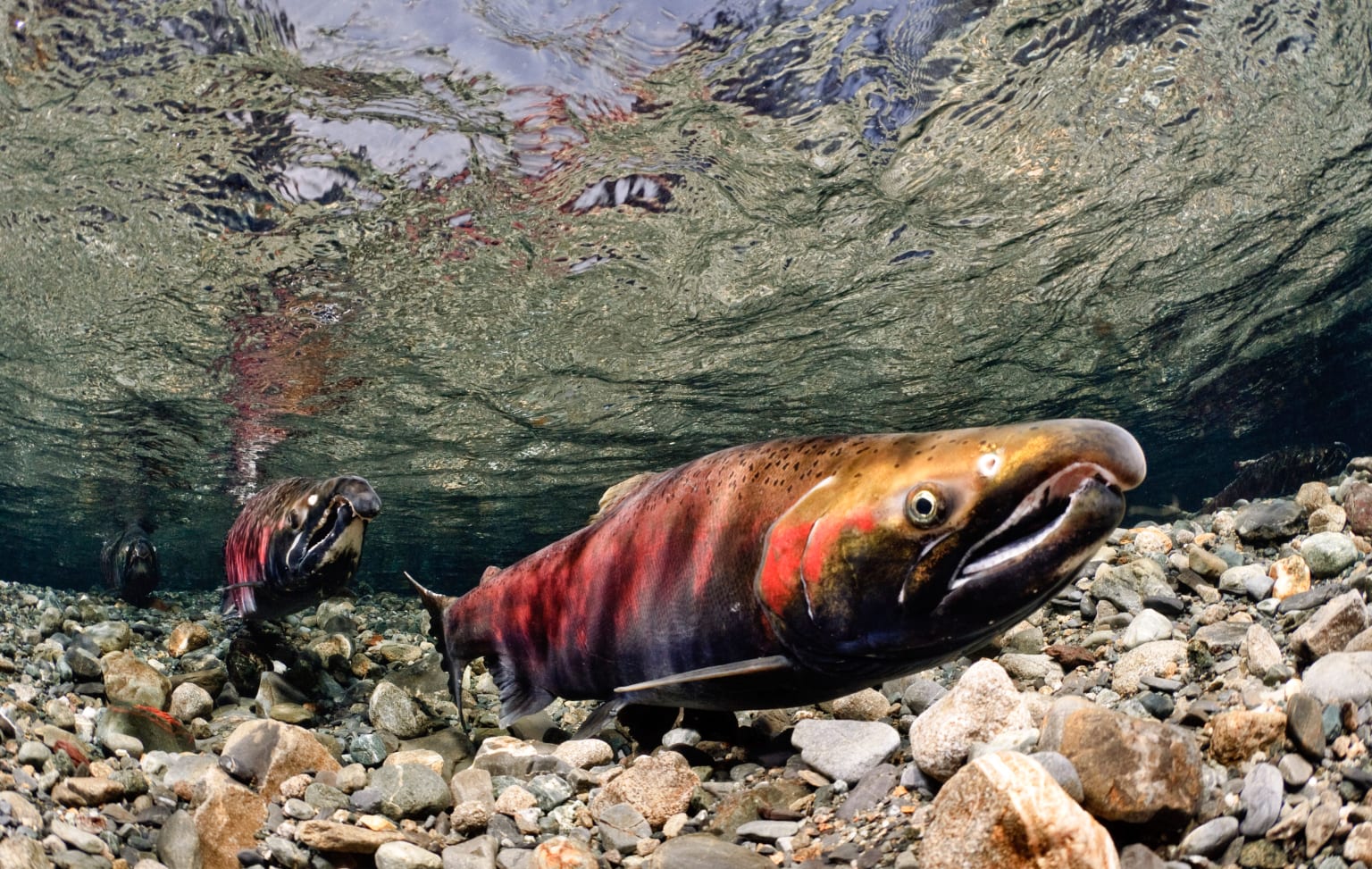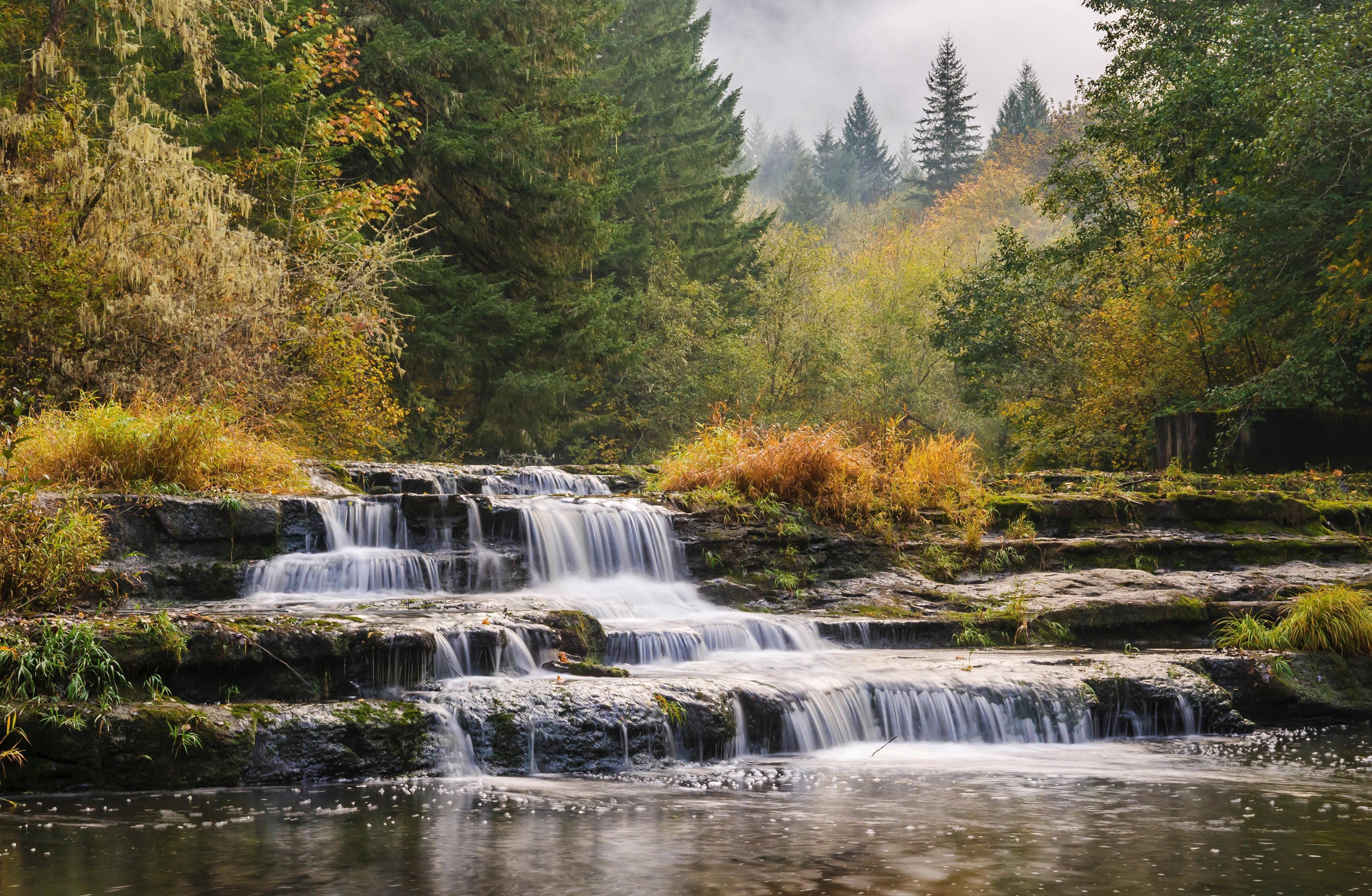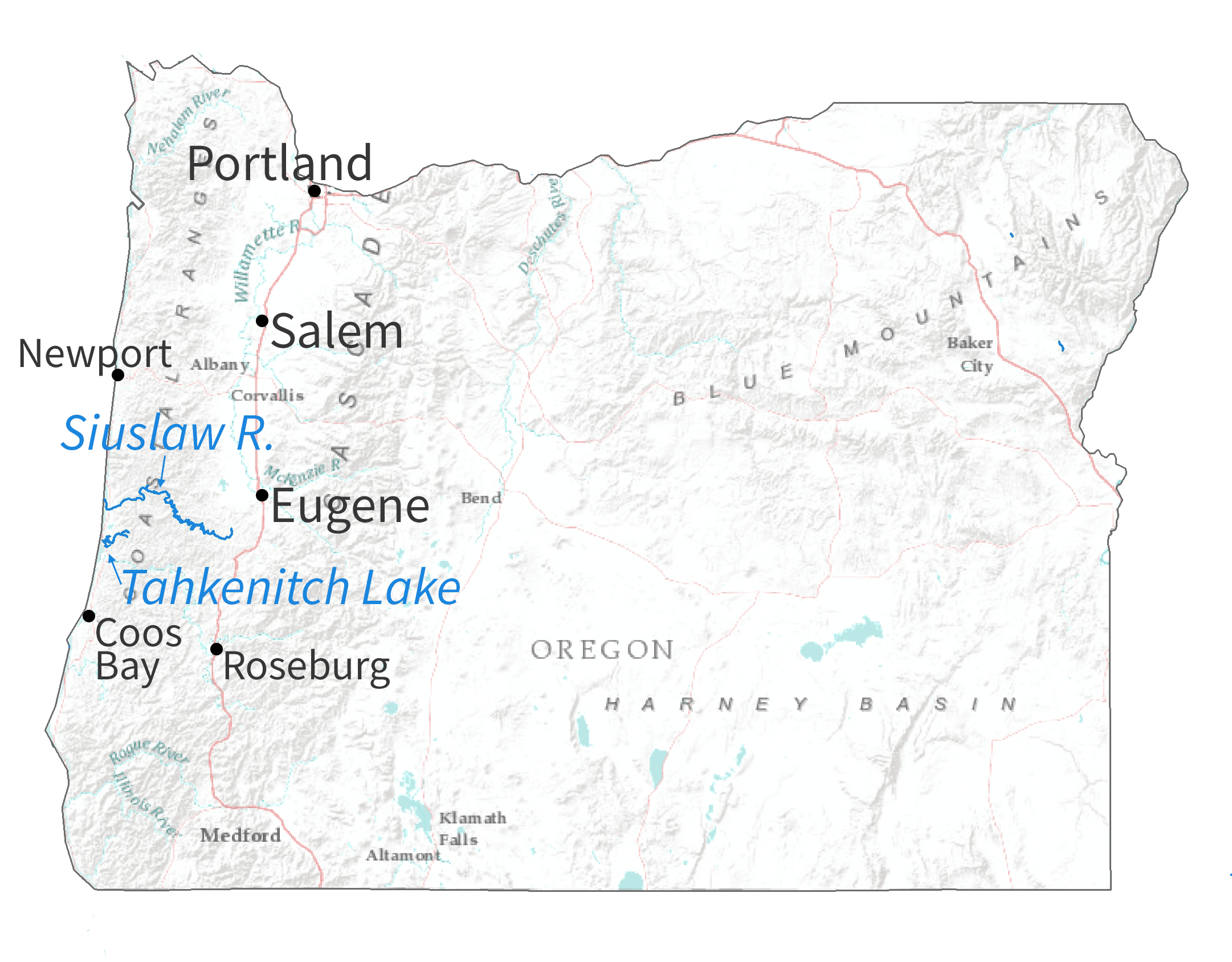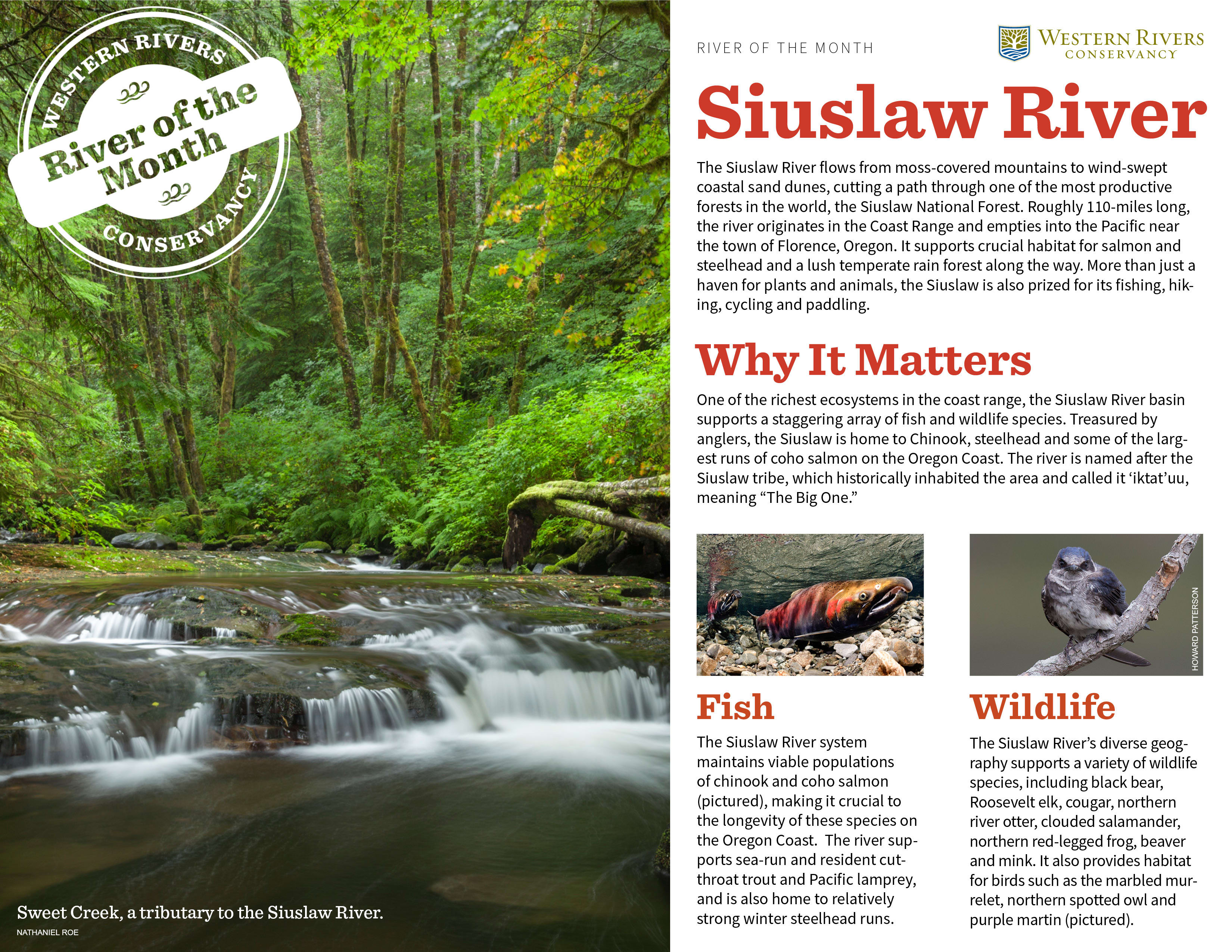
Fish

Wildlife
The Siuslaw River’s diverse geography supports a variety of wildlife species, including black bear, Roosevelt elk, cougar, northern river otter, clouded salamander, northern red-legged frog, beaver and mink. It also provides habitat for birds such as the marbled murrelet, northern spotted owl and purple martin (pictured).
-
Hike
For a scenic stroll, try the Sweet Creek Falls Trail, which starts at Homestead Trailhead, 10 miles southwest of Mapleton, and takes you on a 2.2-mile trek past 11 cascading waterfalls bordering the verdant banks of the lower Siuslaw. Or visit the hidden treasure Pawn Old Growth Trail, which starts just east of Florence and follows the North Fork Siuslaw in a short, 0.8-mile loop through moss-laden, 250-foot-tall old-growth trees.
-
Fish
The Siuslaw is a cherished fishing destination. Salmon arrive in August, with peak runs in September and early October. Anglers fishing the lower Siuslaw are usually chasing salmon and sea-run cutthroat trout. Between late December and March, both wild and hatchery steelhead arrive, with the most abundant runs occurring from Mapleton upstream. Check the Oregon Department of Fish and Wildlife for current regulations.
-
Paddle
The Siuslaw Water Trail provides 30 miles of peaceful paddling opportunities, past sloughs, swamps, sand dunes and historic waterfronts. The trail includes both the North Fork and mainstem Siuslaw, and spans between Florence at the Siuslaw Estuary and Mapleton, Oregon. Paddlers can reach the river from various access points along Highway 126. Experienced boaters can float the entire stretch between Florence and Mapleton in a day trip, depending on tides and wind.
The WRC Story
Streams in and around the Siuslaw River basin on Oregon’s mid-coast contain some of the best opportunities to maintain populations of coho salmon, steelhead and sea-run cutthroat trout in the Coast Range. WRC completed two projects to protect and improve salmon and steelhead habitat in this region. One was on Cleveland Creek, a Siuslaw tributary, where WRC conserved a 365-acre parcel to protect a mile of cold-water habitat that salmon and steelhead need, especially in summer months. The other was on Fivemile and Bell creeks, two streams that drain into Tahkenitch Lake, a massive estuary just south of the Siuslaw River. Fivemile and Bell creeks contain some of the highest densities of spawning coho of any stream in the mid-coast region. In order to protect and recover fish habitat in the two streams, WRC bought a 600-acre property with frontage along three miles of both streams. In 2003, we transferred the lands to the Siuslaw National Forest, which enabled the agency to launch intensive restoration projects that have dramatically improved habitat for coho. Together, WRC’s efforts at Cleveland, Fivemile and Bell creeks provide more hope for the recovery of threatened Oregon Coast Coho and the long-term health of mid-coast salmon and steelhead.


Best Time of Year
- Steelhead fishing
- Dec-Mar
- Salmon fishing
- Aug-Oct
- Hiking
- Year-round
- Paddling
- Year-round, dependent on tides and wind
Go Deeper
-
Siuslaw Water Trail Brochure
(Siuslaw Water Trail Partners)
Learn More -
Story of the Siuslaw
(Siuslaw Watershed Council)
Learn More -
Bell and Fivemile Creeks Restoration Video on WRC project
(Siuslaw Watershed Council)
Learn More


